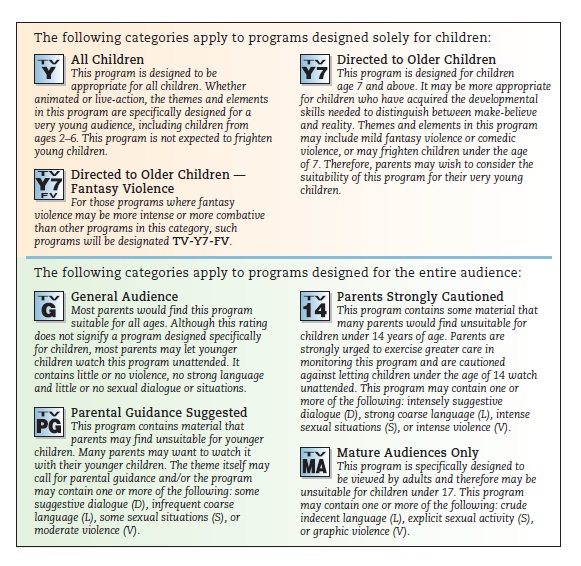Chapter 15 Visual Activities 1
Chapter 15 Visual Activities 1
CHAPTER 15: MEDIA EFFECTS AND CULTURAL APPROACHES TO RESEARCH
Focus Questions
What do these television ratings tell you about the ability of media research to change policies within the media?
What potential problems or inadequacies might accompany this rating system?
TV Parental Guidelines

1 of 2
Short-Answer Questions
Question
1. How did the television rating system develop?
The television industry self-imposed this rating system to ensure that government regulation was kept at bay. These categories are based on today’s television violence and aggression research, which attempts to link violent television images with increased levels of aggression among children. Today’s research developed out of the Payne Fund Studies about the movies’ influence on behavior.
2 of 2
Question
2. What are the Payne Fund Studies, and how did they contribute to the establishment of the film industry’s production code?
The Payne Fund Studies are social psychology studies that were conducted between 1929 and 1932. They were the most influential of early social psychology studies and emerged from a national concern about the effects of motion pictures on young people. In one of the Payne studies, children were taken to a movie house and measured for their responses to violence and sexual content in the movie. Another Payne study linked frequent movie attendance to juvenile delinquency and antisocial behavior. The conclusions of the Payne studies and other studies contributed to the establishment of the film industry’s production code.
[Leave] [Close]